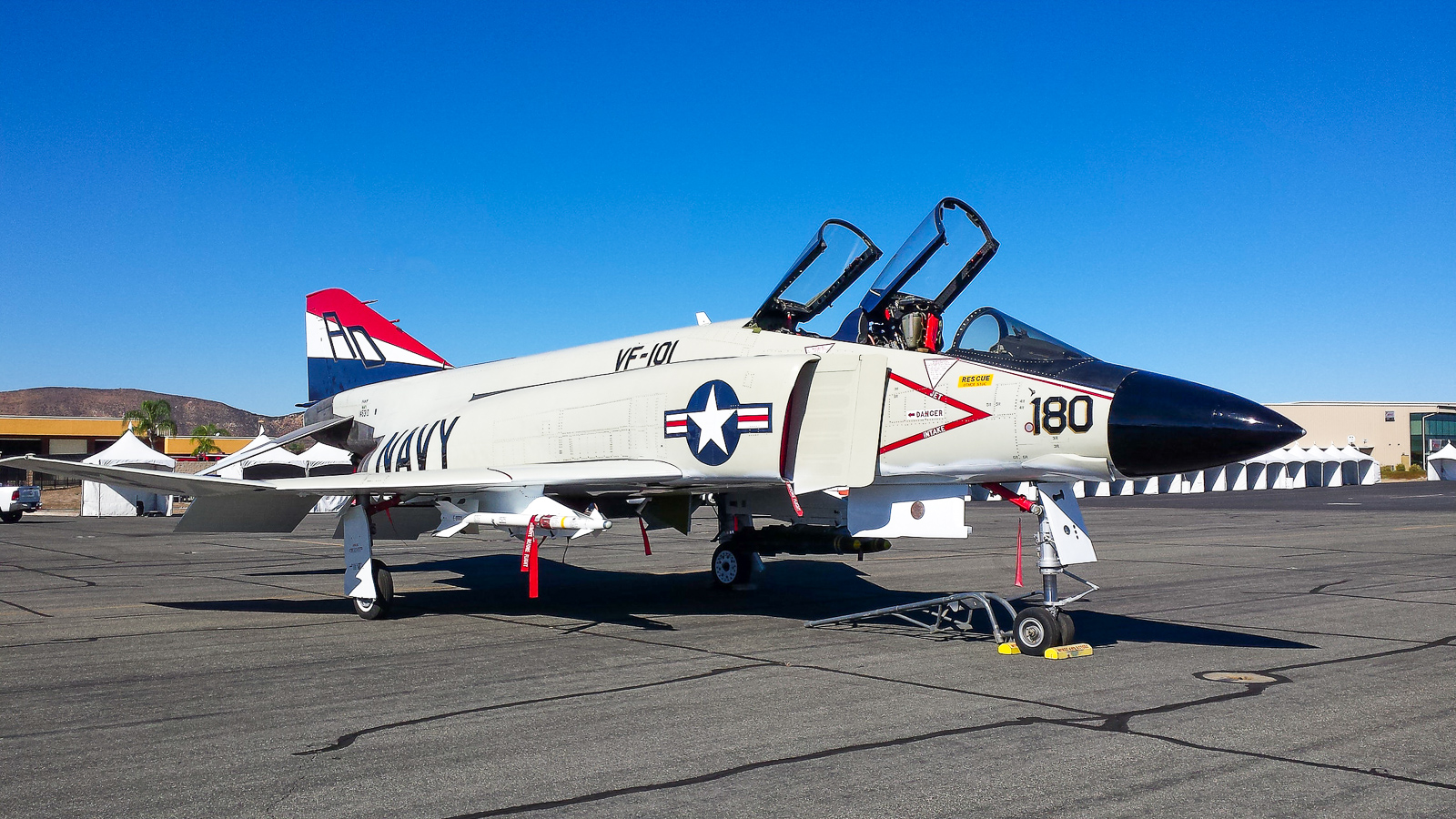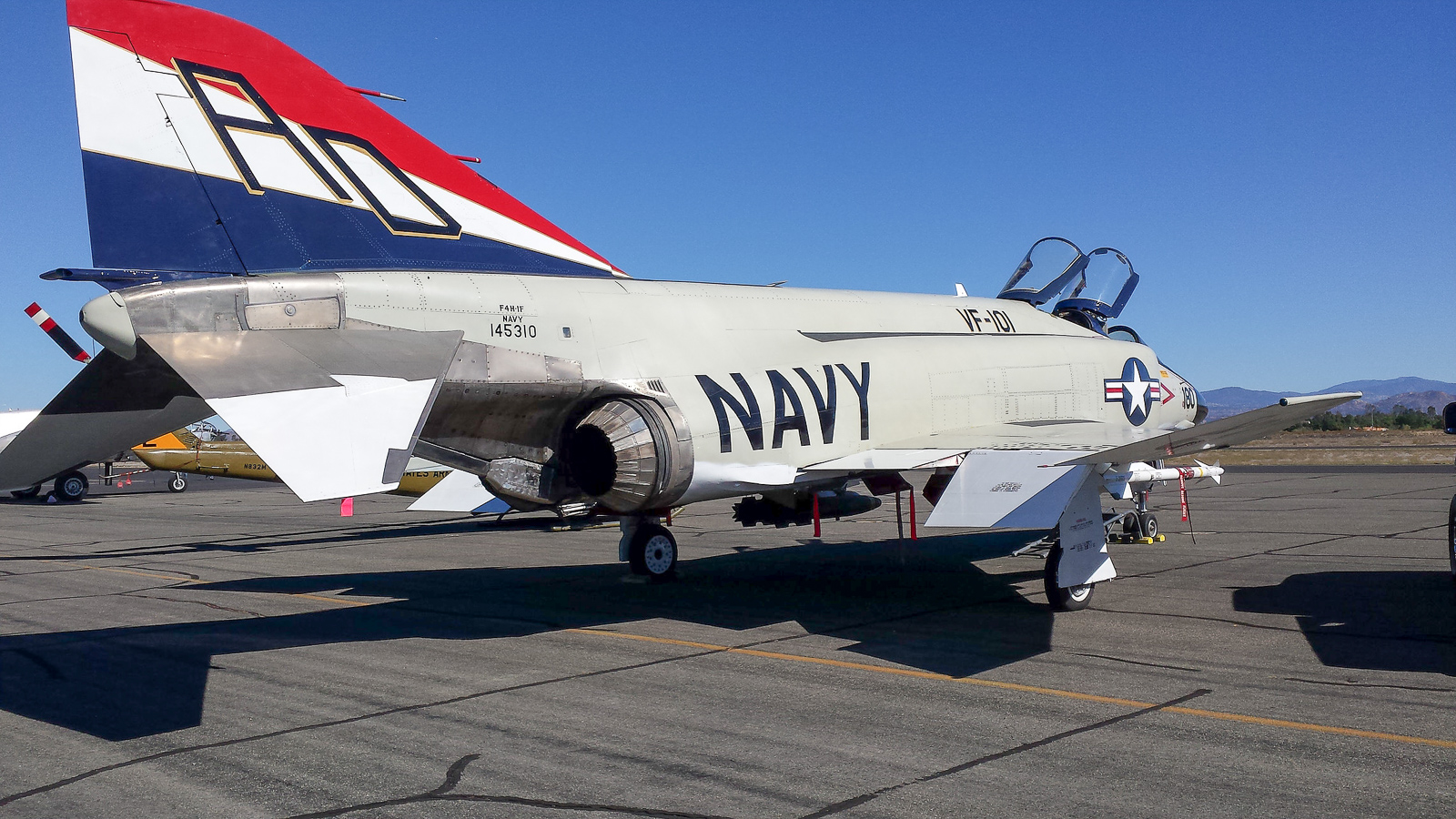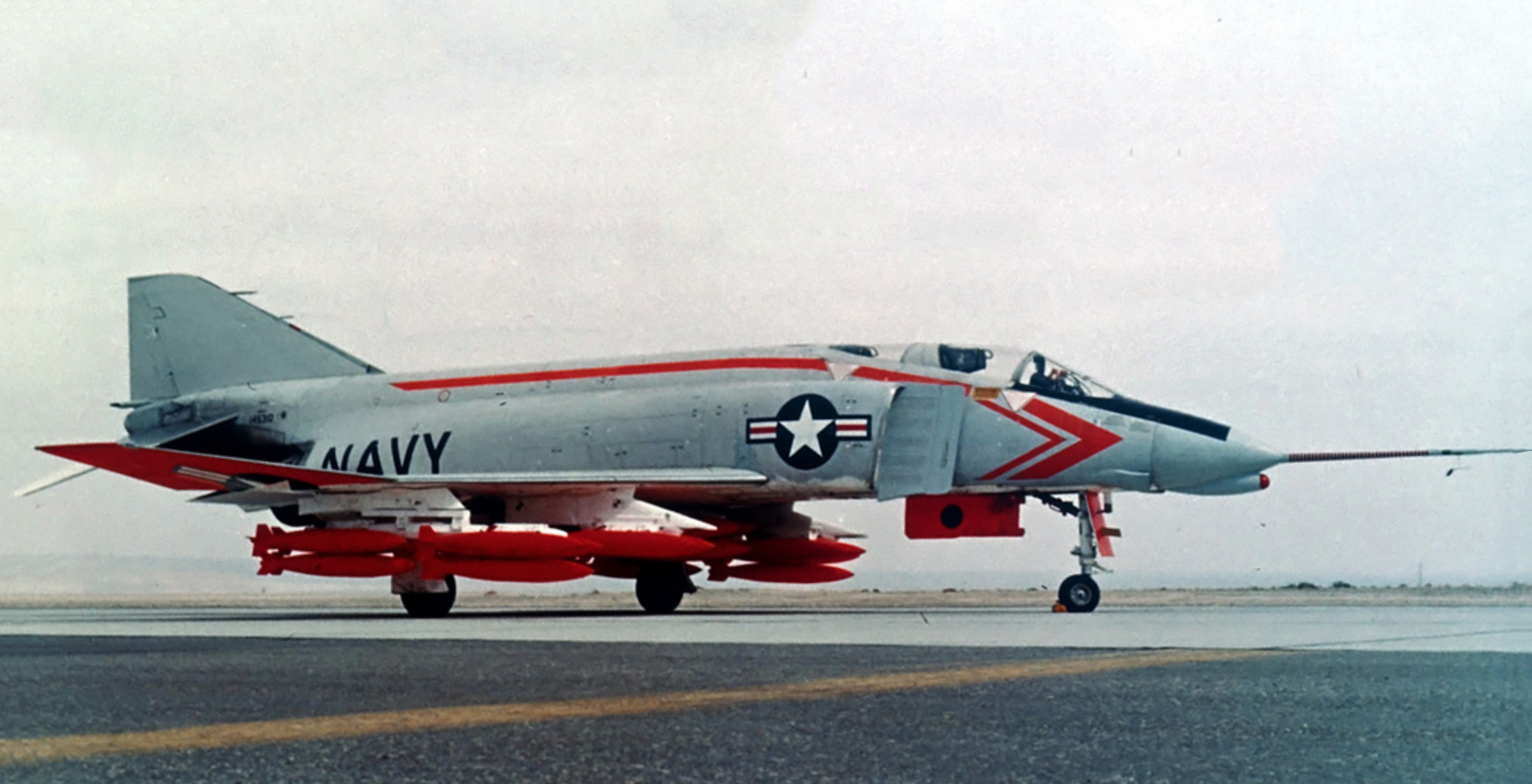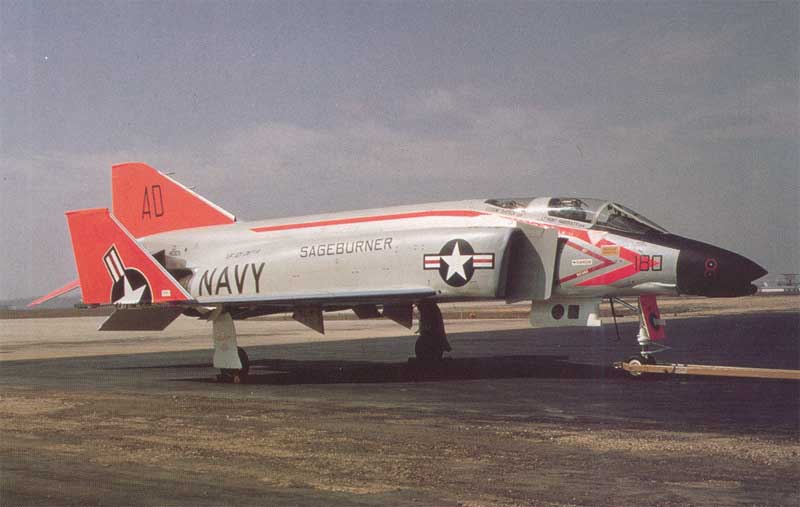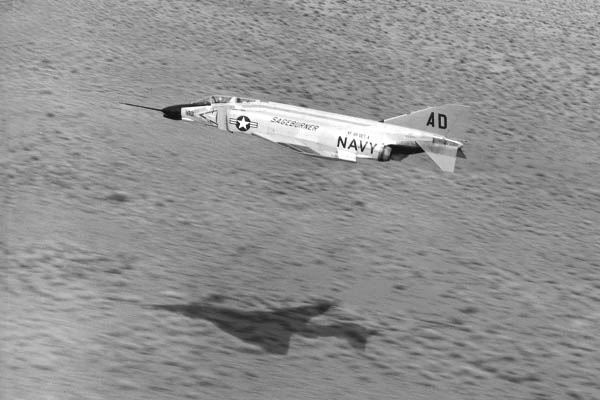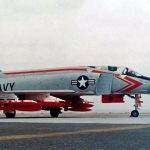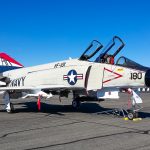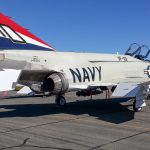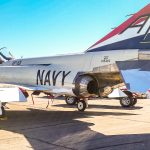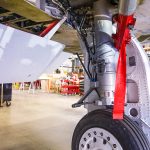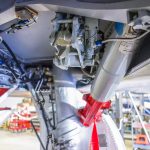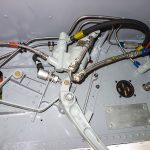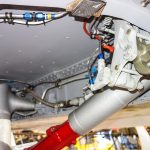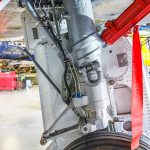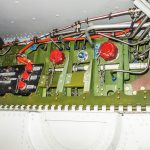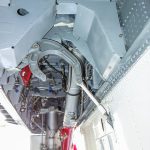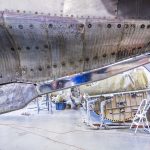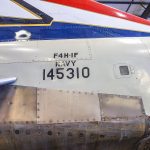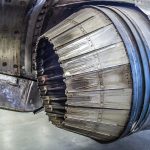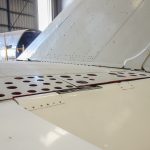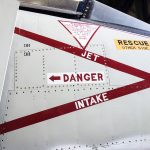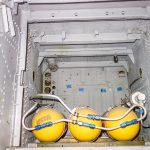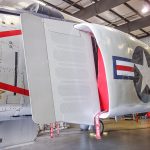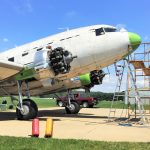Sitting in a hangar at French Valley Airport near Murrieta, California is a rare and historic aircraft: McDonnell F4H-1F Phantom II Bu.145310. This fighter is the eleventh Phantom II ever built, and the fourth oldest survivor of just a handful of F4H-1Fs extant. She is also the only civilian-owned Phantom II capable of being restored to flight, with roughly 80-85% of the hard work done… and now she is for sale at Platinum Fighters.
McDonnell only produced 45 examples of the F4H-1F. These aircraft rolled off the production lines before the proposed J79-GE-8 engines were available, so the manufacturer substituted the less potent J79-GE-2 variant instead. This is the reason for the peculiar “F” suffix in the aircraft’s type designation, which differentiates these examples from the later F4H-1 production variants which had the proper engines. Interestingly, the F4H-1F became the F-4A following the amalgamation of the U.S. military aircraft type naming system in September 1962, whereas the F4H-1 became the F-4B, the first Phantom II variant to reach frontline squadrons.
Bu.145310 played a significant role in the development of the Phantom II. She flew first in 1959 and took part in numerous trials for the type. Of particular note, she was first of the breed to be modified with hard points to carry bombs. On April 22nd, 1961 this Phantom carried twenty-two 500lb Mk.83 bombs aloft and dropped them accurately during a demonstration for U.S. Air Force personnel at a bombing range within Fort Bragg, near Fayetteville, North Carolina. It was this successful action which convinced the Air Force to order the type for their own service, and led to the type’s longevity as a tactical fighter bomber, rather than the pure fighter which the Navy had first envisioned.
Bu.145310 was also one of three Phantom IIs selected to take part in the famous ‘Sageburner’ low altitude world air speed record attempts over a 3km course at the White Sands Missile Range in New Mexico. Sadly the first such attempt ended in disaster on May 18th, 1961 when F4H-1F Bu.145316 experienced pitch damper failure. This lead to pilot-induced-oscillations, and due to the aircraft’s enormous speed at the time, these rapid pitch movements immediately overstressed the airframe, which experienced catastrophic structural failure and disintegrated in flight with the loss of her crew, Commander Jack L. Felsman and Ensign Raymond M. Hite, Jr. Undeterred, however, the Navy achieved their goal later that year on August 18th when Lieutenants Huntington Hardisty and Earl De Esch flew F4H-1F Bu.145307 to an average speed of 902.714mph over a 3km closed course…. all at an altitude of less than 125 feet! This aircraft is now part of the National Air & Space Museum’s collection.
Following ‘Sageburner’, Bu.145310 continued flying test work, including a spell loaned to the U.S. Air Force. Her last flight was in September, 1964, with a total of 461 hours on the clock. Shortly after her retirement, she went on public display in Philadelphia, Pennsylvania. The New England Air Museum later saved her from the scrap man in 1976, and they owned the aircraft for some years, but ended up selling it on. It was with Kal-Aero in San Diego, California by 1995, and Rich Wall purchased her in 2003 for what became the Wings & Rotors Air Museum, now in Murrieta, California. The Phantom has been under slow, but active restoration ever since. She is currently painted in a rather fetching VF-101 livery. The Grim Reapers were the first squadron to begin working up on the F4H-1F Phantom II, so it seems fitting that she wears these colors. In March, 2017, the restoration was close enough to being done that the Phantom II went on the civil registry as N815WF.
According to Platinum Fighters, “The airframe has undergone a complete IRAN per U.S. Navy standards. Everything has been overhauled to 0 time condition. Needs engines overhauled, avionics, and ejection seats.” Platinum also notes the following list featuring some of the major aspects of the restoration work performed so far, and what remains to be done…
Restoration: Currently 80-85% completed
– Airframe has undergone a complete IRAN per U.S. Navy standards
– Dual Controls installed in the rear cockpit
– All components overhauled to “0-time” condition
– Aircraft has been completely rewired
– Fuel system rebuilt with new fuel cells
– All hydraulics rebuilt with Stainless Steel lines
– All three hydraulic systems overhauled
– 2 pneumatic systems overhauled
– New wheels and brakes
Work Remaining Includes:
Engines: to be overhauled
General Electric J-79-8 upgraded to -15
3x engines currently at Aero Turbine awaiting overhaul
2x engines in California as spares
Ejection Seats: Will be Hot
Martin Baker Mk 7 seats “0/0”
Pyro Charges Available
Avionics: TBD
As already stated, the project comes with five J79-8 engines (upgraded to -15 standard). It also includes new crew parachutes and survival kits, centerline and outboard drop tanks and two drag ‘chutes.
This is a project for the serious collector, of course, but its historical pedigree and standard of restoration is first class. There is currently only one F-4 Phantom II operated on the air show circuit, which is the F-4D operated by the Collings Foundation. This F4H-1F is likely to be the only other Phantom II available for public ownership and operation. Be sure to check with Platinum Fighters to learn more, or to check out their other premium warbirds currently on the market.







